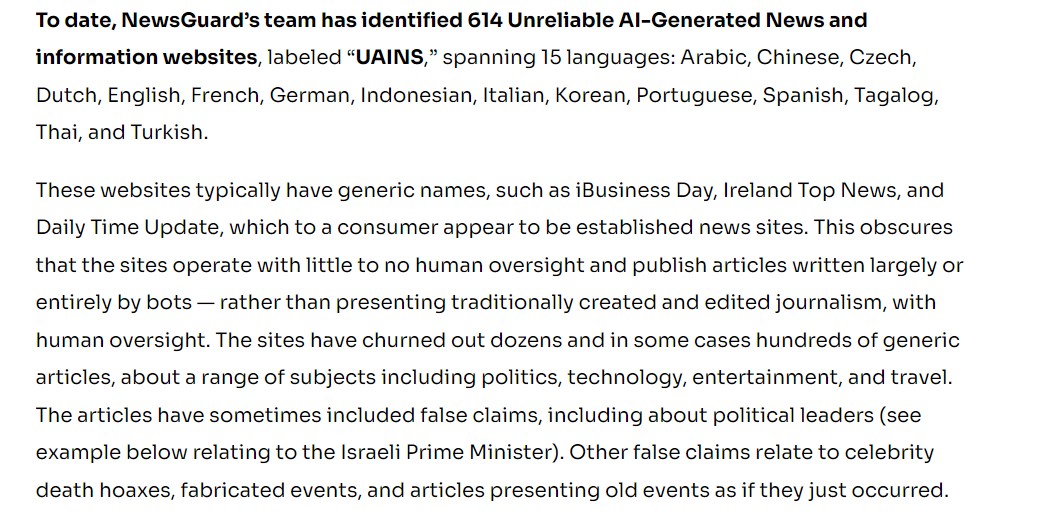The global artificial intelligence (AI) market was valued at USD 454.12 billion in 2022 and is expected to hit around USD 2,575.16 billion by 2032. That’s huge! AI adoption is increasing at a phenomenal rate, with the number of UK AI companies increasing by 688% over the last 10 years. Around one in six UK organisations, totalling over 423,000, have embraced at least one AI technology according to government research. But is AI really the way forward for business? Sometimes. But here’s when NOT to use AI for marketing.
How is AI Being Used in 2023/24?
AI undoubtedly has its uses. For example, UK government data shows the most commonly adopted AI solutions in the UK focus on: data management and analysis (9%); natural language processing and generation (8%); machine learning (7%); AI hardware (5%) and computer vision and image processing and generation (5%).
AI-powered data analysis tools can help researchers analyse data more efficiently, speeding up this time-consuming aspect of projects. AI scheduling software can also prioritise deadlines and create colour-coded visuals that make it easy to see who’s doing what, when and where. And, of course, there’s ChatGPT, a natural language processing tool driven by AI technology which allows you to have a human-like conversation and much more with a chatbot. Chat GPT can compose emails, essays and code and is currently open to use by the public for free. Chatbots have become increasingly smart due to AI functionality. They can often understand the context of the situation and respond accordingly by asking deeper questions within the same thread – rather than presenting customers with a ‘cookie’ cutter’ answer like they did in the past.
To stay ahead of trends, businesses are also using AI to automatically conduct initial and ongoing research to constantly uncover and understand market sentiments before competitors do. AI can certainly help businesses to understand their clients better and create marketing campaigns around specific wants and needs. But when should AI not be used for marketing purposes? Let’s find out.
When AI Marketing is a No-Go
AI technologies aren’t going anywhere and do have their place in business. But the overuse of AI can actually put a wedge between you and your customers. With this in mind, here’s a rundown of things it really shouldn’t be used for:
#1 Article Writing
Certain industries such as the finance space need to work hard to gain consumer trust. With so many bad apples in the sector, being transparent and humanising content such as blogs and articles is a must as it’ll help to draw your audience closer. AI-generated content often lacks depth and fails to provide unique insights. It might also contain factual errors or lack accuracy, as AI algorithms solely rely on data inputs. This undermines the credibility of AI-written content and may lead to a decline in reader trust.
Biases can also appear in content. This is because an AI system is only as good as the data it’s trained on and any bias contained in the training data will infect the generated content, potentially resulting in content that’s prejudiced and discriminatory against certain groups of people. Time is needed to retrain AI systems if data is skewed.
AI-based article writing might seem tempting. But it’s often void of substance, originality and emotion. An investigation by NewsGuard uncovered 614+ websites publishing content entirely created by generative AI. It describes the articles as ‘low quality and clickbait,’ which are content types you never want associated with your brand. Clickbait titles can even go against financial marketing regulations which state that marketing content must be ‘clear, fair and not misleading.’

#2 Writing Website Content
As a writer, I’m biased. BUT, when it comes to website content, there’s no substitute for human creativity, understanding and personalisation. The content on your website should resonate with your target audience and be written specifically to meet their needs. AI might be able to formulate web content that’s grammatically correct and relatively interesting, but it doesn’t understand the nuances of human communication and lacks the genuine emotional intelligence to connect with consumers.
As many AI algorithms work by analysing pre-existing content already available on the internet, the models can produce inaccurate, duplicate or outdated content. This is not always good for SEO as Google prioritises unique, fresh and current information. After all, it’s the search engine’s job to provide the most relevant and timely content for any given internet search query. Inadequate content also looks unprofessional and can damage a company’s credibility and reputation. For government or finance-related websites, crafting regulatory compliance content that’s fully signed off by your marketing team before being published is the best way to stay out of hot water with regulatory bodies such as CySEC, ASIC and FINRA. This is something I fully recognise as Director of Contentworks Agency, an agency specialising in financial services marketing.
#3 Client Communication
Interacting with consumers is a huge part of the marketing journey. Whether you speak to a client on chat or engage in a social media thread, you need to respect the company tone of voice and reflect your brand in a positive way at all times. With this in mind, there are many issues with using AI chatbots for marketing, especially for the finance sector. For example, data quality and privacy can be compromised. Again, chatbots are only as good as the data they use to learn, train and interact. This therefore needs to be top notch to avoid poor customer service and client retention.
What’s more, data privacy is a major concern for customers and regulators, as chatbots may collect, store and share sensitive personal and financial data without proper consent, security and compliance. When chatbots are used, companies need to be sure that they respect the privacy and rights of their users. Is Meta using AI bots? Check out this recent communication I had with one of their support people. This comes across as scammy and fake to me. What do you think?

Another challenge for AI-based chatbots is understanding natural language. This natural form of human communication can be difficult for AI to comprehend, with Natural Language Processing (NLP) being the branch of AI that takes on this task. NPL can struggle with ambiguity, context, tone, slang, humour and emotions and provide irrelevant or inappropriate answers as a result. AI software also shows little compassion which is something often needed when handling financial advice.
And it seems NLP isn’t keeping up with consumer demand. A recent study shows that 86% of consumers prefer to interact with a human agent; 71% would be less likely to use a brand if it didn’t have human customer service representatives available and only 30% believe that chatbots and virtual assistants make it easier to address customer service issues.
#4 Brand Designs and Logos
AI can churn out a brand logo in minutes making it an appealing option for businesses looking to get up and running quickly without shelling out hard-earned cash. But there are problems with this idea. Firstly, AI logos can’t be trademarked. This is because AI logo software scans the internet or data mines user-uploaded images, with or without the artist’s permission. It then combines these elements to craft the logo. As the elements of the logos belong to others and are not original, they can’t be protected. This means other businesses can use a similar logo to yours – no questions asked.
Moreover, many companies become renowned for their unique brand style and their visuals are meticulously thought out to reflect the brand ethos. The Barclays Bank eagle, for example, has been a part of the company’s visual identity since its very first days, helping to represent power and excellence. Revolut also recently explained each element of their logo redesign, posting the following to LinkedIn. This shows how important it is to think through your logo ideas without AI help.
#5 Photography
Photographs made with AI are becoming increasingly popular due to their ability to enhance images and produce high-quality results. With AI-powered algorithms, photographers can automatically adjust exposure, contrast and colour balance to create more visually appealing images. But AI also has the potential to manipulate images in ways that are misleading or even harmful. Governments, for example, should be wary of ‘deep fake’ images which are used to spread false information or defame individuals.
Similarly, photographs used in the finance space should again follow all the privacy and compliance rules associated with the sector. Faces shouldn’t be used without permission, biased messaging shouldn’t be communicated and marketing messages mustn’t be misleading. Another thing to keep in mind is that consumers like authentic marketing. So anything over edited or highly polished might come across as fake and untrustworthy. Hilariously, AI also has a habit of adding fingers and even ears to its photos. This was its attempt at AI-ing me below!

AI usage is the talk of the town right now, but it’s important to put things in perspective. We have already been using AI for years through social media scheduling tools, editors and other softwares. The obsession of ChatGPT isn’t shared by content professionals and strategists who know that it won’t cut the mustard for serious brands at the moment. For human written content and killer marketing strategies, get in contact with me.